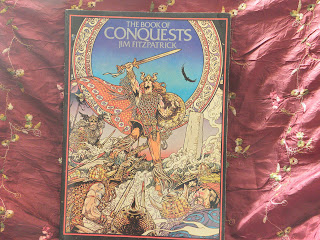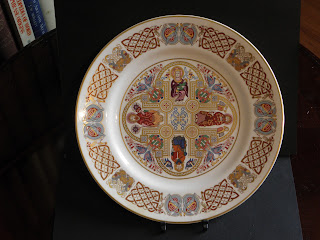William Bligh and the seventeen
men from the Bounty faced almost certain death. They were crammed together in a
23-foot launch; the waterline was scarcely a handbreadth from the top of the
boat, what scant provisions they had were quickly spoiling, they had neither
charts nor maps, and the weather was against them. Days and nights were spent
frantically bailing, just to keep afloat. Heavy seas, towering waves and
constant rain battered the tiny vessel. The men had no room to stretch out,
their muscles ached from the bailing and the bone-numbing cold, and despite
Bligh’s best efforts to provide rations, they were starving.
 |
| Chart of islands discovered by Bligh in the Bounty's Launch, from Bligh's A Voyage to the South Seas 1792 |
They passed by the
Fiji islands, frightened to land lest they were attacked again, skirted the New
Hebrides, and crossed the Coral Sea. Remarkably, Bligh kept up his log, which
records their misery in terrifying detail, and he managed to record their
approximate position, speed and distance throughout. After fifteen days, on May
24th 1789, the weather lightened and the sun warmed them. Bligh was
right to note that the rain had probably kept them alive – they had water from
it, and if they had been in constant sun, would have succumbed to the heat and
drought. They saw such birds that indicated land must be near, and managed
several which were divided between the eighteen of them. They saw driftwood,
and heard breakers, and Bligh, relying on his knowledge and what charts he
carried in his memory, decided this must be the Great Barrier Reef, lying off
the shore of New Holland (as Australia was known then).
 |
| The route of the Bounty's launch, from Bligh's A Voyage to the South Seas 1792 |
They sought a passage
through the reef, and on May 29th made landfall, where they made
fire and ate a broth made from oysters and periwinkles. Just as importantly,
they slept easily, without being cramped. They made such repairs as they could
to the launch, took on 60 gallons of water and collected shellfish, with the
plan of island-hopping along the coast. But arguments began to break out, not
least from Purcell, the carpenter, who had argued with Bligh on Tahiti. Bligh
armed himself with a cutlass and threatened Purcell, who was ‘insolent to a
high degree’. Bligh noted seven of the men to be ‘not well disposed’ in his
log, including Fryer, the master, and Lamb, the butcher he had flogged for
losing his cleaver, (this Lamb would catch, and eat raw, several small birds
all to himself, out of sight of his comrades).
The men began to grow ill, and
several had to be nursed carefully, whilst the others gather what foodstuffs
they could. Bligh navigated a course to the south of Papua, edged westward through
the Torres Strait and to the north of the Gulf of Carpentaria, into the Timor
Sea. On June 8th, he calculated they had rations sufficient for
another nineteen days. The bad weather returned, along with the cold and the
need to bail, but they made steady progress and even managed to catch a
dolphin, which they ate. In the evening of Friday June 12th they
sighted land, which Bligh thought must be Timor. Making their way along the
coast for the next couple of days, on June 14th they made contact
with some ‘Malays’, one of whom agreed to pilot the launch to Coupang. Bligh
had had a small Jack made from signal flags, which he hoisted, and then had the
launch rowed into Coupang.
 |
| Arrival at Coupang, Timor |
They came ashore and were helped to the Governor's
mansion, where they were given tea and bread and butter;
“… their limbs full of
sores and their Bodies nothing but skin and Bones habited in Rags, and at last
let him conceive he sees the Tears of Joy and gratitude flowing o'er their
cheeks at their Benefactors. With the mixture of horror surprize and pity that
his mind will be then agitated, were the People of Timor on giving us releif.”
(Bligh’s Log, June 14th 1789).
In 48 days they had sailed, in an
open boat, 3,618 nautical miles, and had lost only one man, John Norton, stoned
to death on Tofua. They had sufficient rations left for another eleven days.
 |
| The Bounty launch at Tofua, with the death of John Norton. |
Other men died soon after; the botanist Nelson and the cook,
Hall, from the privations of their ordeal. Peter Linkletter, William
Elphinstone and Robert Lamb died, probably from malaria contracted in the
pestilential port of Batavia, either in the Dutch East Indies, or on the voyage
home.
Eventually, in October 1789, Bligh boarded a Dutch East Indiaman, the
Vlijt, which received dispensation to land him in British waters; he was
delivered onto the Isle of Wight on Saturday, March 13th 1790. By
midnight, he was in Portsmouth; the next morning he took a post-chaise to
London, and on Monday morning he was at the Admiralty.
It had been 321 days
since the mutiny on the Bounty.


















































